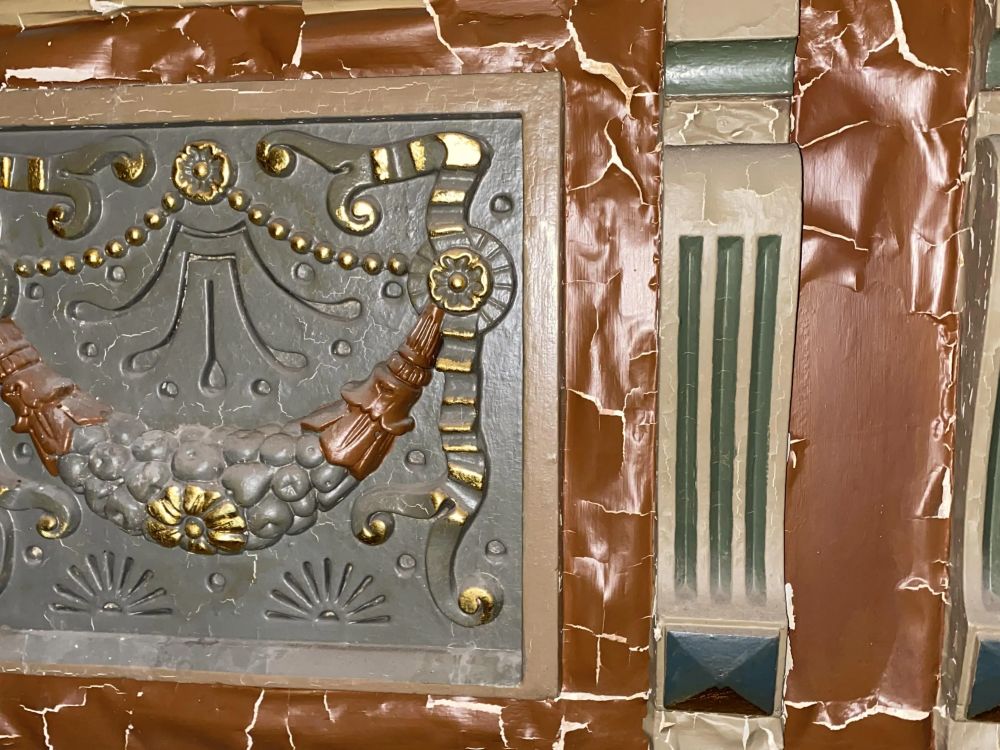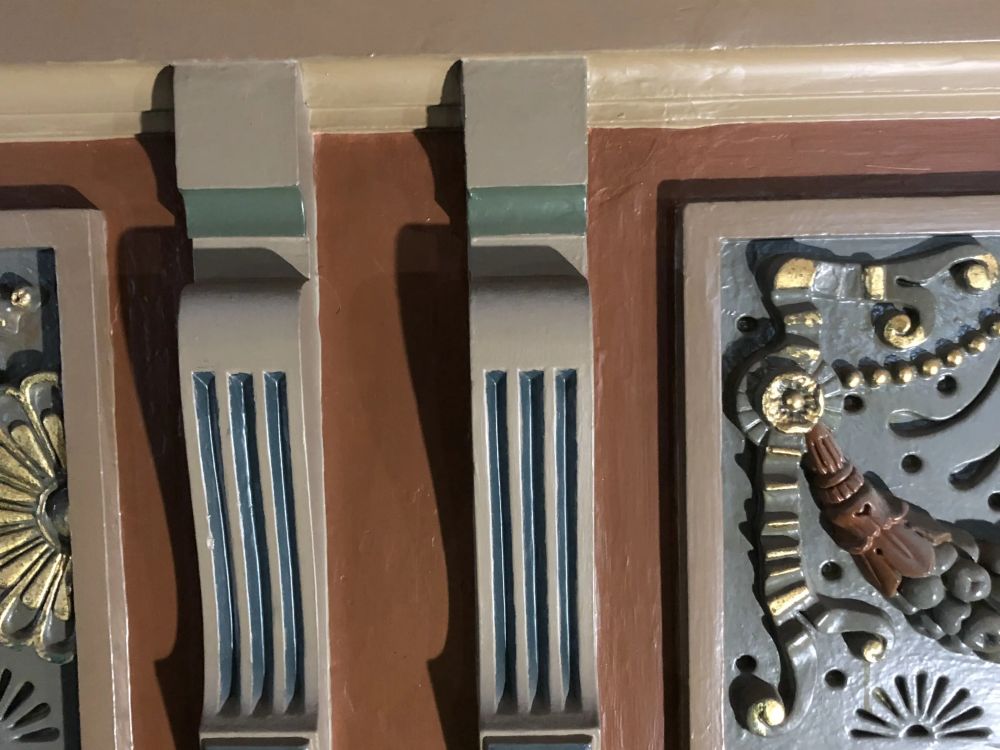Condition
The Grand Staircase was affected with extensive peeling paint, predominately in the south-west corner, although other small patches were apparent around the entire space. On the flat walls the suspended acrylic paint had peeled back in multiple large sheets, and on the plaster mouldings the suspected enamel paint demonstrated a ‘fractured’ pattern with pockets of air apparent behind undamaged areas.
The original ceiling appeared to be in good condition overall; very small areas of cupping paint were visible across the whole ceiling and minor cracks and small chips were apparent.
Additionally, some of the mouldings around the central lift well had dropped in some areas with cracking apparent at the ceiling line; this was focused on the southern end of the space.
Treatment
- Scaffolding was setup to allow conservators access to assess the upper west wall to identify and document areas
- Loose paint flakes were removed and matching of the acrylic and enamel colours was undertaken
- A primer was applied to all scraped surfaces
- The scraped areas were levelled with an application of Gyprock multi-purpose joint compound and sanded down to a smooth surface
- The walls were primed and painted with two coats of acrylic paint, and the plaster mouldings were primed and painted with two coats of enamel semi-gloss paint
- Stencils were taken of the floral decorative frieze and beige pattern on the wall, and the stencils were then used to trace decorative patterns onto the remediated walls
- Guilding was then repaired in areas where paint remediation affected the guilding, and Lefranc & Bourgeois Charbonnel 3-hour oil was applied and allowed to dry until just tacky
- Dutch gold leaf was then applied to the side and any excess was brushed from the surrounding surfaces
- A thin coating of shellac was applied to the Dutch leaf to tone it to the original and provide a protective layer
- A consolidant was then applied to the ceiling in discrete areas
- Japanese tissue was held against the area being treated and the solution was repetitively brushed through the tissue
- A sheet of blotted paper was pressed against the surface of the tissue to flatten paint flakes underneath and soak up excess consolidant
- The Japanese tissue was gently peeled back from the surface and then gently dabbed with a cotton swab dampened with ethanol to remove any remaining residue
- An area of loss to the plaster was filled, levelled, and textured with small hand tools
- Areas of paint loss and the fill were retouched
Treatment Outcomes
The treatment was successful in that the paint has now been repaired, consolidated, and stabilised. ICS conservators noted that provided that the surrounding building fabric of Sydney Town Hall is regularly maintained, long-term preservation of the remediated paint surfaces within the Grand Staircase should be achievable.
Before treatment
After treatment







.png)


